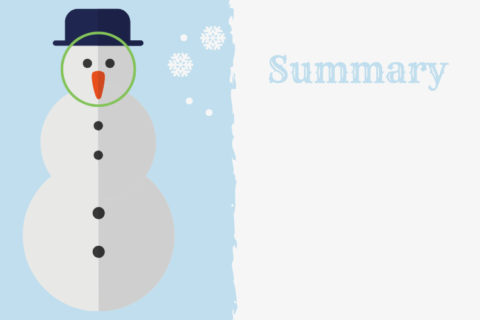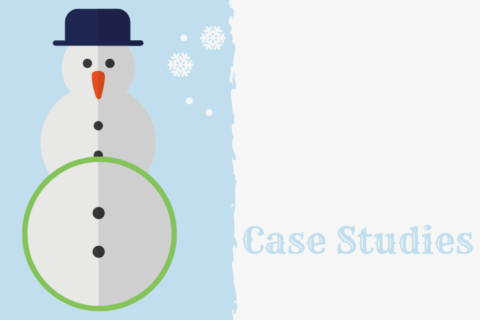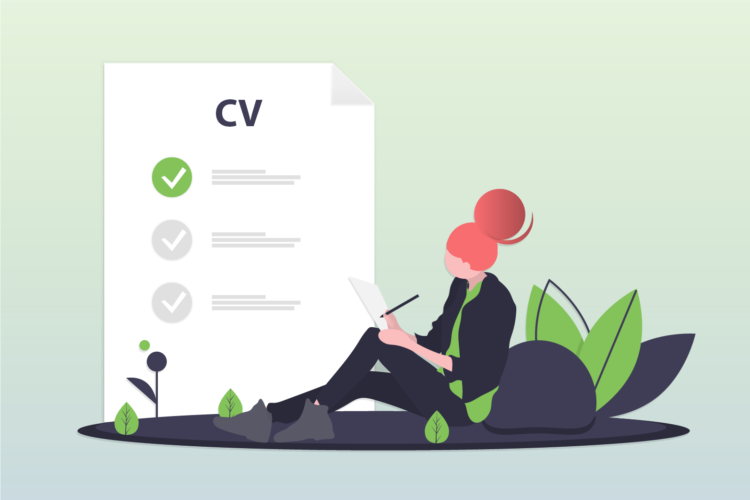In my career so far I have been involved in a fair amount of recruitment, especially since joining the Civil Service. Having seen countless UX CVs, I have been thinking about what makes a good CV lately. Particularly, what makes a good user research CV and what’s missing from most of them.
Most UX CVs don’t do their owners justice
It is very common for people to list the methodologies they have used, such as usability testing or depth interviews. They usually add some context, e.g. the name of the website or service they have worked on. While it is important to present the range of methodical experience you have, such a list omits a lot of detail.
Your CV should convey that you are a well-rounded user researcher, experienced in the planning, doing, analysing, and communicating of user research. This is a difficult thing to achieve with a standard CV. So I’ve started to develop an updated structure that allows user researchers to sell themselves on paper by presenting important information in a concise way. My reimagined UX CV consists of three parts so that hiring managers can quickly gain an understanding of your expertise.
Reinventing your UX CV
1 Start your UX CV with a summary

- Number of years of experience
- Industries you have experience in
- Work environments, e.g. agile, waterfall, lean, startup, large organisation, etc.
- Contexts, e.g. websites, digital services, paper forms, in-person customer experiences, refining/creating information architectures, etc.
- Research and analysis methods you’re experienced in (including accessibility testing, expert reviews, journey mapping, etc.)
- Methods you’ve used to communicate your findings/recommendations (e.g. personas, experience maps, executive summaries, etc.)
- Other responsibilities and skills you have, e.g. as a team leader
Example using my own experience
I have 15 years of UX experience as a consultant, manager, researcher, and leader in academic, client-side, and agency-side roles.
User research methodologies:
- Usability testing (remotely, in a lab, and natural setting, with and without eye tracking)
- Card sorting (face-to-face and remote)
- Ethnographic observation, contextual inquiry
- Depth interviews (face-to-face and remote)
- Surveys
- Diary studies
- Workshops: facilitating, supporting, participating, ideation and participatory design, data analysis and persona generation, and introducing, reporting, and gaining feedback at various stages of (agile) projects
- Expert evaluation: site reviews, competitor benchmarking, content audits
- Web analytics (Web Trends, Google, Omniture, Google Analytics)
- Pop-up research
Analysis methodologies:
- Analysing data to produce actionable recommendations for iterative improvement through affinity diagramming, content analysis, prioritising issues, and user needs
Communication methodologies:
- Executive summaries and detailed reports, personas, scenarios, mental models, experience maps, information architectures
Prototyping:
- Producing paper and low fidelity wireframes using Balsamiq and Axure
Platforms and devices:
- I have worked with paper, low – high fidelity prototypes, development environments, and live sites on mobile, touch screen kiosks, tablets, and desktops, for responsive and traditional sites, mobile and tablet apps.
Project style and sectors:
- Lean, agile, and waterfall in finance, retail, travel, public sector, entertainment, not for profit, education
Management:
- Project management for various types of research (pitching, proposals, alignments, preparation and execution of research, analysis and presentation of results), relationship and people management (internal, client, and third-party teams)
Leadership:
- I have lead multidisciplinary teams of content managers, editors, IT, and social media specialists. I have lead a group of user researchers within a programme and I now lead a community of user researchers and analysts within a government organisation.
2 Put your job list in the middle of your UX CV

- Job list: job titles, organisations and dates, additional responsibilities (e.g. line management), a short description of the impact your work may have had
- Education
- Publications list, if relevant
Example using my job, education, and publication history:
Head of User Research and Analysis. Government Digital Service. November 2018 – Present. Head of user research and performance analytics communities across GDS products and services.
Lead User Researcher. Service Design, Standards, and Assurance. Government Digital Service. August 2017 – November 2018. My responsibilities included doing complex research, setting the strategic direction, and coordinating research across teams in the Service Design, Standards, and Assurance programme. I supported the learning and development of the 9 researchers. I worked within the programme’s multidisciplinary management team.
Senior User Researcher. Service Manual, Patterns, and Tools Team. Government Digital Service. April 2017 – August 2017. Doing research for the Service Manual, Patterns, and Tools team. Coordinating research from 3 user researchers in the team. Ensuring all research was high quality to help the team build a deep understanding of our users and prioritise work.
Head of Digital Strategy – Directorate of Defence Communications. Ministry of Defence. September 2016 – March 2017. Leading digital communications strategy across the multiple organisations that make UK Defence. Advocating and developing an agile, user-centric, and data-driven approach to engaging with users across defence digital channels, including web and social media in organisations.
User Experience Lead. Digital Strategy Team – Directorate of Defence Communications. Ministry of Defence. February 2015 – September 2016. Managing user experience and content strategy across the whole of UK defence. Delivering and iteratively improving websites, GOV.UK content, and social media impact. Procurement, user research, information architecture, analytics, content design, and strategy.
User Experience Consultant. Bunnyfoot. January 2009 – January 2015. Delivering user research and information architecture projects for a range of clients. Including lean, agile, and waterfall projects in finance, retail, travel, public sector, entertainment, not for profit, education.
User Experience Manager. Marketing Department. HSBC. October 2007 – December 2008. Managing user experience on hsbc.co.uk and personal internet banking.
Usability Analyst. Lastminute.com. January 2007 – September 2007. Conducting user research and expert evaluations. Producing actionable recommendations for improving lastminute.com and its white-label sites.
EDUCATION
PhD Information Science. City University. 2003 – 2007. Using and Evaluating HCI Techniques in Geovisualization: Applying Standard and Adapted Methods in Research and Education.MSc Geographic Information. Distinction. City University. 2002 – 2003.
BSc Environmental Geoscience. 2.1. University College London. 1999 – 2002.
PUBLICATIONS
Book: Marsh, S. User Research. A Practical Guide to Designing Better Products and Services. March 2018. Kogan Page.Blog posts: medium.com/@slmarsh81
Peer-reviewed book chapters:
Marsh, S.L. and Haklay, M. Evaluating and deployment. Interacting with Geospatial Technologies. 2010. Peer-Reviewed Book Chapter: (Ed. Haklay, M.) John Wileys & Sons Ltd.Voudouris, V. and Marsh, S. L. Geovisualization and GIS: A Human Centred Approach. In Visual Languages for Interactive Computing: Definitions and Formalizations. 2008. (Eds, F. Ferri), Idea Group Inc.
Peer-reviewed conference papers:
Marsh, S. L., Dykes, J. A. and Attilakou, F. Evaluating a Geovisualization Prototype with Two Approaches: Remote Instructional vs. Face-to-Face Exploratory. 2006. Proceedings of Information Visualization, London.Marsh, S. L. and Dykes, J. A. Using Usability Techniques to Evaluate Geovisualization in Learning and Teaching. 2005. Joint ICA Commissions Seminar “Internet-Based Cartographic Teaching and Learning: Atlases, Map Use, and Visual Analytics”, Madrid.
Marsh, S. L. and Dykes, J. A. Using Usability to Evaluate Geovisualization for Learning and Teaching. 2005. Proceedings of the GIS Research UK 2005 13th Annual Conference, Glasgow.
Towards the Modification of OS MasterMap for Specialist Users. 2004. Proceedings of the GIS Research UK 2005 12th Annual Conference, Norwich.
3 Wrap up your UX CV with some case studies

Choose one or two short case studies to write up. These should enable you to depict the kind of experience you have. It can be useful to summarise work using the STAR approach: describing the situation, task, action, and result.
Results are rarely described in CVs or case studies. Sometimes, this can be because organisations aren’t good at measuring. Other times, it’s because evaluations and measurement are done in silos. Include whatever you can about the impact of your work. If you have numbers (e.g. increased conversion), great. But you can also discuss qualitative examples of your work making a difference. For example, how your research caused a change in organisation/team behaviour or how it fed into evidence-based iterations of a prototype or live service.
Case studies will also allow you to describe your soft skills, e.g. team and stakeholder engagement. User research is a team sport, as we say at the GDS.
Obviously, in a CV document, you have to be fairly strict with the amount of information you include. Otherwise, it will become too long. But you can still show your range and depth of experience. Simply write up case studies on your own website or blog and include a link in your CV. If you also prototype, design, etc., you should include these links, too. Remember to appropriately credit any visuals in your case studies that others have created.
Case study example:
Prior to Armed Forces Day (AFD) 2015, I identified that the AFD website was an ineffective communication tool. Talking to colleagues responsible for the site, it was clear that site maintenance was unsustainable.
A new website was essential to effectively raise awareness of AFD and thus generate advocacy for the armed forces community through demonstrating their contribution to the security and prosperity of Britain.
I led the development and launch of the AFD website. Under my leadership, the Digital, Campaign, and Policy teams as well as the external agency worked together effectively to deliver a website that meets Digital by Default standards and supports the aims and objectives of AFD.
Utilising my expertise in user-centred design, I was able to ensure that all involved produced good-quality work. I also developed the project team’s knowledge and skills so that they were better able to balance user needs and business needs. They now have an appreciation for the importance of doing user research and gaining insight in order to get the website information architecture and content right and place it in context of the wider digital landscape.
The campaign team still puts this knowledge into practice. They are constantly thinking about ways to improve AFD digital communication. On AFD 2014, the website in its original form had 7,289 unique visits. On AFD 2015, the website in its new form had 69,582 unique visits. Exploiting the new website and social media has greatly increased engagement on a daily basis.
More to come
This is a work in progress and I’m experimenting with my own CV. Not because I’m looking for a new job. But because I want to see what will work best to showcase my experience. I’ll be posting more case studies on Medium as I go. In the meantime, I’d love to hear what you think about the UX CV outlined in this post. Are the three sections something you would appreciate when hiring a new candidate? Have you tried applying this structure to your own CV?

